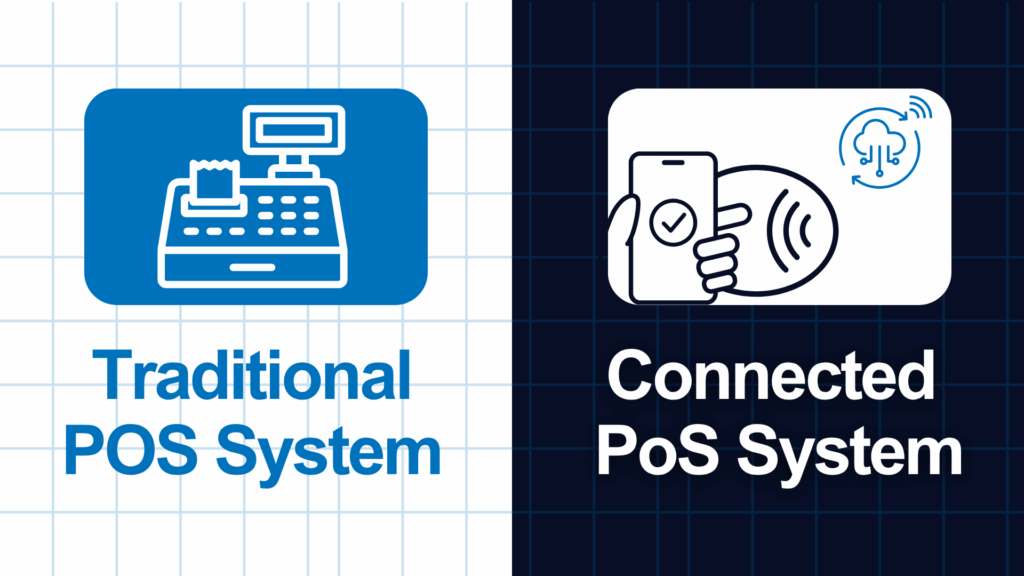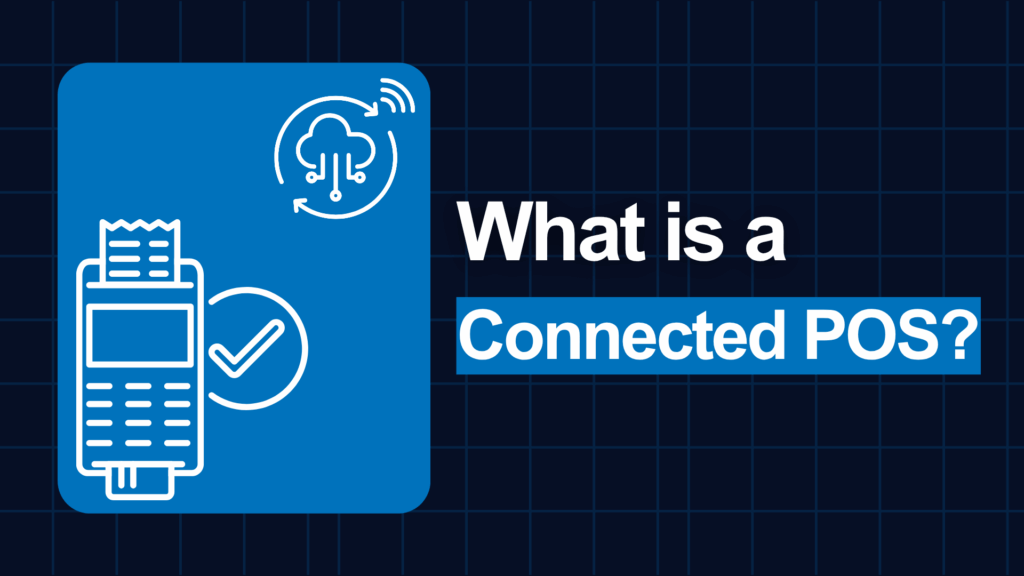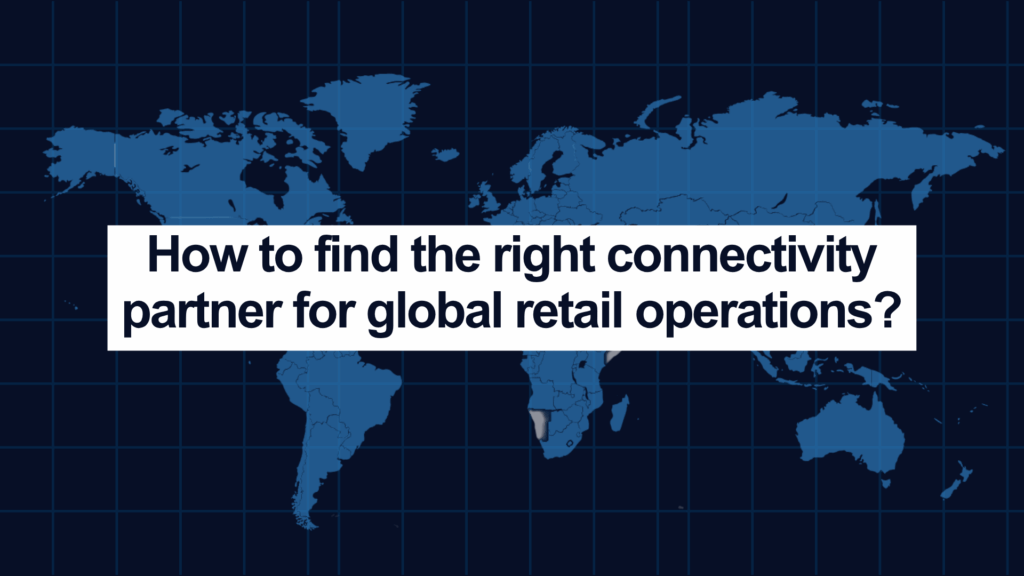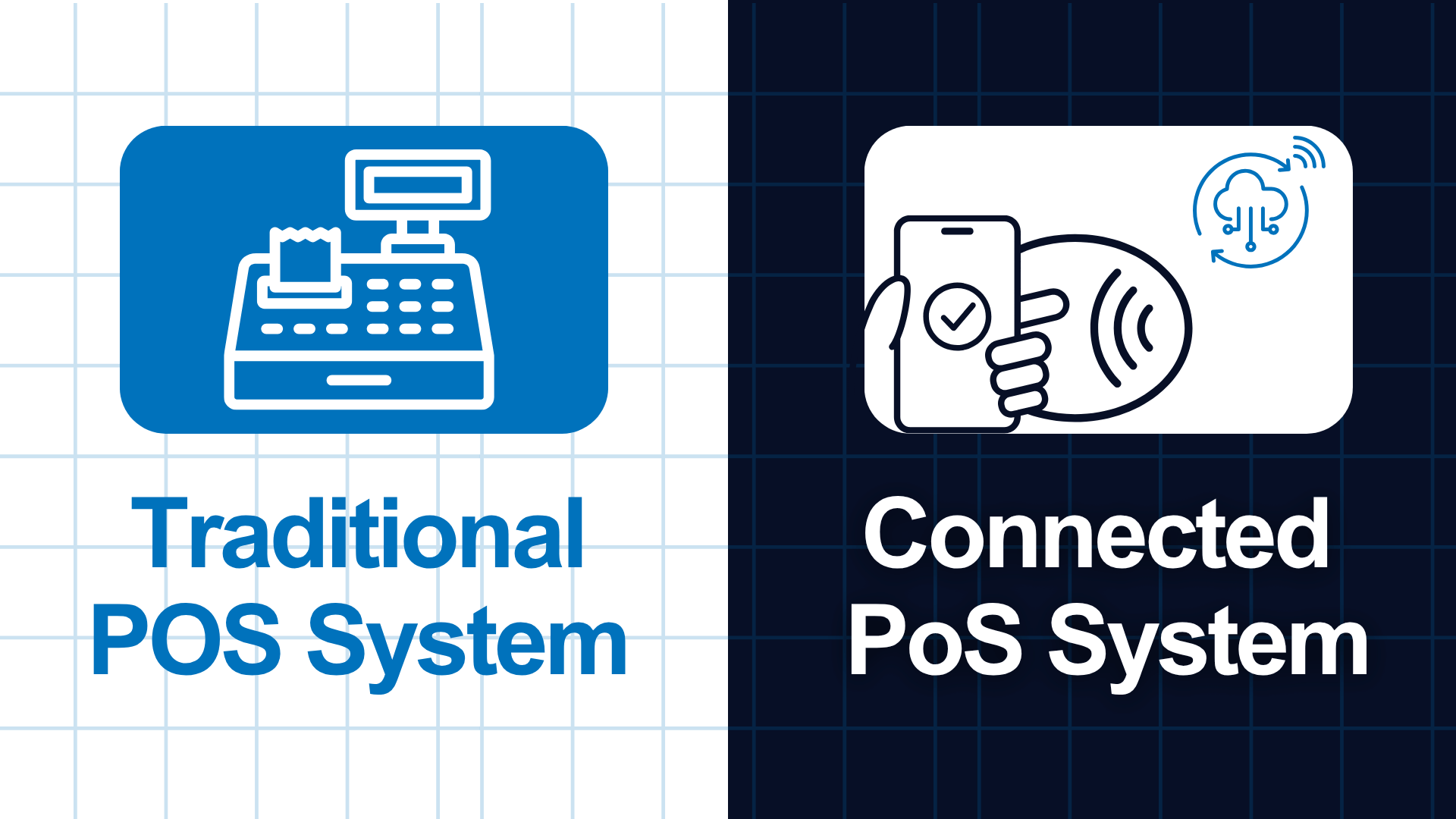
Traditional POS systems often work in isolation, causing inefficiencies in today’s fast-paced retail world. Connected POS systems, on the other hand, link sales with inventory, customer data, and e-commerce in real time, helping retailers make smarter decisions, serve customers better, and boost sales. The right POS system can be the difference between falling behind and staying ahead in retail.
What is a POS (Point of Sale) System?
A Point-of-Sale (POS) system is the checkout system where a retail transaction happens between a business and its customer. It brings together hardware and software to handle sales, take payments, and support daily retail operations. The hardware usually includes tools like barcode scanners, cash registers, receipt printers, card readers, and touchscreen monitors.
These help staff carry out transactions smoothly in the store. The software is what keeps everything running. It lets retailers calculate prices, apply discounts, manage stock, track customer activity, analyze product performance, and produce sales reports. That said, Traditional POS systems can have some key limitations, such as:
- Local data storage: All transaction and inventory data is stored on-site, making remote access and real-time updates challenging.
- Manual updates: Software updates and maintenance require manual intervention, often causing downtime.
- Limited integration: Integrating with other business systems or eCommerce platforms can be complex and costly.
- Hardware dependency: Expansion or upgrades often require investment in additional equipment.
Modern POS systems have moved well beyond basic cash registers. They now handle many types of transactions, including cash, cards, and digital payments. These systems can be used in both physical stores and online stores.
Many also come with features tailored to specific industries. For example, supermarkets can use self-service kiosks, while pop-up shops and restaurants may use mobile POS terminals. Integrated POS solutions connect smoothly with inventory management, accounting, and customer relationship management (CRM) tools. This gives retailers a full view of their business and makes everyday tasks easier to manage.
What is a Connected POS (Point of Sale)?

A Connected POS is an advanced point-of-sale system that connects to the cloud and uses IoT technology. Using Connected POS, Retailers can access and manage sales, inventory, and customer data from remotely, supporting both in-store and remote work. Another big advantage is unifying their store ecosystem under a single solution for wider visibility.
Unlike Traditional POS systems, which often depend on local servers and separate networks, Connected POS works over the internet. This allows real-time communication between devices, apps, and the cloud.
Key features of Connected POS include:
- Cloud-based data storage and syncing: All transaction and inventory information is stored securely in the cloud, making it accessible and safe.
- Real-time analytics and reporting: Retailers get instant updates on sales, stock levels, and customer behaviour. This helps them make informed decisions.
- Automatic software updates: Updates and security patches happen remotely, reducing downtime and keeping systems compliant.
- Omni-channel integration: Connected POS links easily with eCommerce platforms, loyalty programmes, and CRM tools. This creates a seamless customer experience both online and in-store.
- Remote device management: IT teams can monitor, fix, and configure POS devices from a central dashboard, cutting down the need for on-site visits.
- Enhanced security: Strong encryption and compliance features protect payment and customer data to meet industry privacy standards.
What are the key differences between Traditional POS and Connected POS?
| Feature | Traditional POS | Connected POS (Cloud/IoT) |
| Data Storage | Local server/hardware | Cloud-based, accessible anywhere |
| Updates | Manual, on-site | Automatic, remote |
| Integration | Limited, complex | Seamless with eCommerce, CRM, ERP |
| Scalability | Hardware-dependent | Instantly scalable, device agnostic |
| Uptime/Resilience | Single network, prone to outages | Multi-network, resilient connectivity |
| Real-Time Analytics | Limited | Built-in, actionable insights |
| Security | Local controls | Advanced IoT security, compliance |
| Cost Structure | High upfront, maintenance | Subscription, pay-as-you-grow |
How does a Connected POS function?
IoT connectivity is what makes Connected POS systems so powerful. Instead of just being simple checkout terminals, they become smart, connected devices that improve how modern retail works. By using IoT SIM cards or eSIMs in POS terminals, retailers can keep their systems connected to the cloud at all times, no matter where they are or what the network conditions are like.
This connectivity brings several important benefits:
- Always-on availability: Connected POS terminals can switch between different cellular networks. This means payments can still be processed even if one network goes down.
- Remote monitoring and management: Retailers and IT teams can watch device status, update software, and fix problems in real time. This helps keep stores running smoothly and reduces downtime.
- Real-time data flow: Sales, inventory, and customer information update instantly across all channels and locations. This supports quick decisions and better customer experiences.
- Scalability: IoT connectivity makes it easy to add new POS terminals for pop-up stores, events, or new shop locations without complicated network setup.
- Enhanced security: Connected PoS systems use strong security measures like VPNs and encrypted data to reduce the risk of fraud and data breaches.
By using IoT connectivity, Connected POS systems give retailers a way to run smoother, more reliable, and flexible operations that fit today’s omnichannel retail world.
How to choose the right connectivity partner for global retail operations?

As more retailers adopt Connected POS and smart POS systems, having reliable IoT connectivity is essential. As a global cellular connectivity solutions provider, Transatel provides multi-network connectivity designed specifically for the retail industry.
Why choose Transatel as your connectivity partner for global retail operations?
- Global coverage: Connect POS terminals in over 200 countries and territories using a single M2M SIM or eSIM.
- Multi-network connectivity: With Transatel’s multi-network SIMs, smart devices automatically switch to the strongest network to ensure continuous service and payment processing.
- Centralised management: Manage SIM cards, run diagnostics, and monitor usage from one unified platform.
- Scalability: Easily deploy and manage connectivity for thousands of POS devices worldwide.
- Security: Multi-network SIMs include advanced features such as VPN, IP whitelisting, and compliance with payment security standards.
Transatel’s IoT connectivity solution helps retailers connect cloud-based POS and smart retail systems that maximise network uptime, reduce operational risks, and support growth, no matter where the retail stores are located.
Editor’s Final Thoughts:
For modern retailers, choosing between Traditional and Connected POS is more than just a technology update. It is a strategic decision that affects how well a business adapts, how customers experience shopping, and how competitive the business will be in the future.
Using IoT connectivity and multi-network POS terminals helps retailers keep their operations flexible and ready for any connectivity challenge. Global cellular connectivity providers like Transatel make it super easy to set up, manage, and scale connectivity for Connected POS.
Click here to book a meeting with one of our connectivity experts and learn how to keep your retail ecosystem 24/7 connected.
Yes, Connected POS systems are designed to be flexible and can easily support mobile or pop-up retail setups. Because they use cellular connectivity, retailers can process sales anywhere, even without a fixed location. This makes them perfect for events, markets, or temporary pop-up stores.
A multi-network POS terminal offers better reliability by connecting to several mobile or Wi-Fi networks. If one network goes down, the terminal switches to another automatically. This ensures continuous sales processing and reduces downtime, which is crucial for retailers.
Transatel’s IoT connectivity solution provides reliable and multi-network connectivity for Connected POS devices anywhere they operate. This helps retailers avoid connection issues and improves the speed and stability of transactions, making the deployment of Connected POS systems smoother and more efficient.
Yes, Connected POS systems follow strict security standards to protect payment information. They use encryption and comply with industry regulations to keep data safe from breaches. This gives retailers and customers peace of mind during every transaction.
Retailers should look at network reliability, integration with existing systems like inventory and CRM, and security features when switching to Connected POS. They should also plan for staff training and choose a solution that fits their business size and sales volume for a smooth transition.





